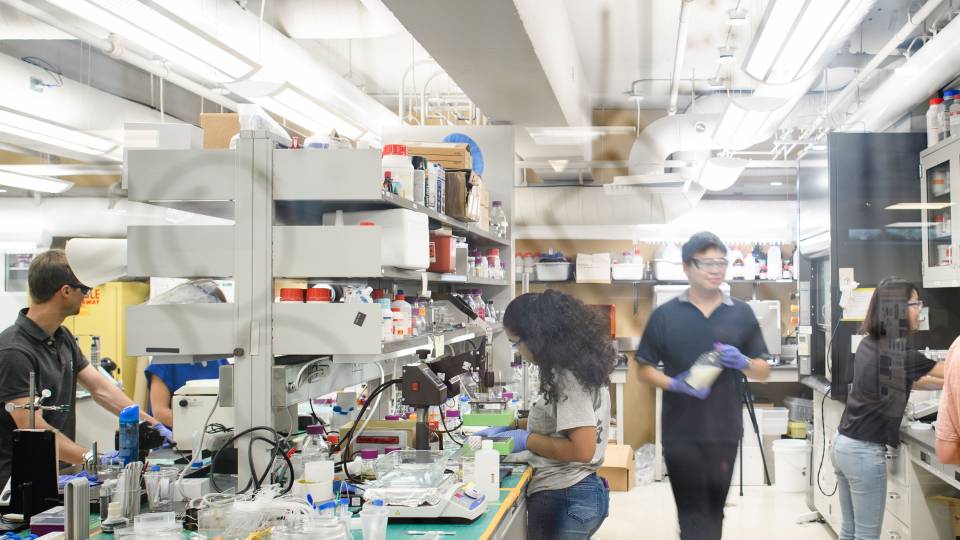
From the April 9, 2007, Princeton Weekly Bulletin
Stefan Bernhard passes around another small dish covered with shards of a familiar dusky substance and directs his 12 freshmen to make a scientific observation about them.
"Let a piece dissolve in your mouth, and compare how the residue feels and tastes," he says — a bit indistinctly, for he is already making his own observations along with the group. A baker's dozen mouths swirl first with melting confection, then with words to describe it.
"It's not as grainy as the first one," someone volunteers. "Denser too, and it breaks more crisply," another says. "Ah, that's the 'snap,' that's what we want," says Bernhard, who then launches into a tasty disquisition on a few details of chocolate-making, a process he learned intimately while growing up in Switzerland, years before joining Princeton's chemistry department.
"I worked in a chocolate factory for three years as a teenager, and discovered there is a lot of chemistry involved in producing high-quality chocolate," said Bernhard, now an assistant professor. "When my colleague Rob L'Esperance heard about my background, he said, 'You have to teach a course on this.'"

Bernhard is now teaching a Richard L. Smith '70 Freshman Seminar on "The Chemistry of Chocolate" for the second time, leading first-year students through many of the same scientific tests he performed when he was about their age. Each Wednesday, after spending a few minutes in the lab placing flasks of solid chocolate into a heater for melting, the group gathers in a classroom to attune their taste buds to one aspect of chocolate's character — how evenly its fats have crystallized, for example, or how large the solid particles it contains are — before returning to the lab to explore the chemistry behind this aspect of their favorite food.
"I'm basically a chocoholic," said freshman Julie Dickerson. "But since I know I want to go into the humanities, this is a good way to learn some science."
On this particular day, she and her classmates dissolved the fats in the melted chocolate with liquid hexane, then poured the solution through a sieve to determine the size of its particles of cacao — the South American bean from which chocolate is made. The smaller the particles, Bernhard explained, the less gritty the chocolate feels on the tongue.

"I'm trying to provide an attraction to science for students who might not otherwise be interested," he said. Indeed, nearly all of the students are leaning toward nonscientific majors, but the attraction is definitely working: The course has had several times as many applicants as he has had seats available.
Bernhard said he tries to provide just the right mix of hard science and fun, which naturally includes the finer points of chocolate tasting. Though he enforces a no-snacking rule in the lab and only provides about half a bar per week for tasting, he knows he needs to issue a disclaimer.
"I tell them right at the beginning I'm not responsible for any pounds they gain from taking the class," he said.







